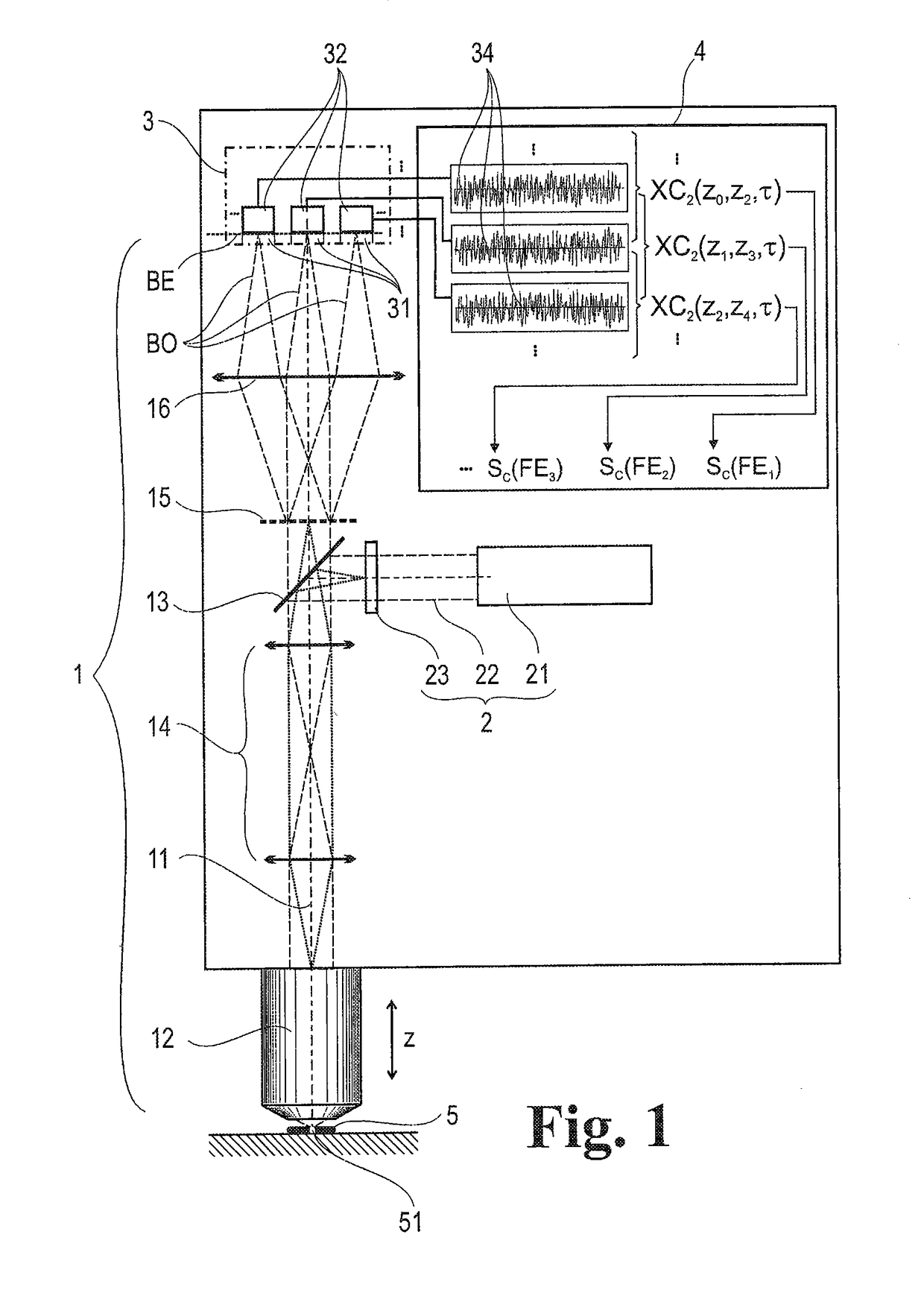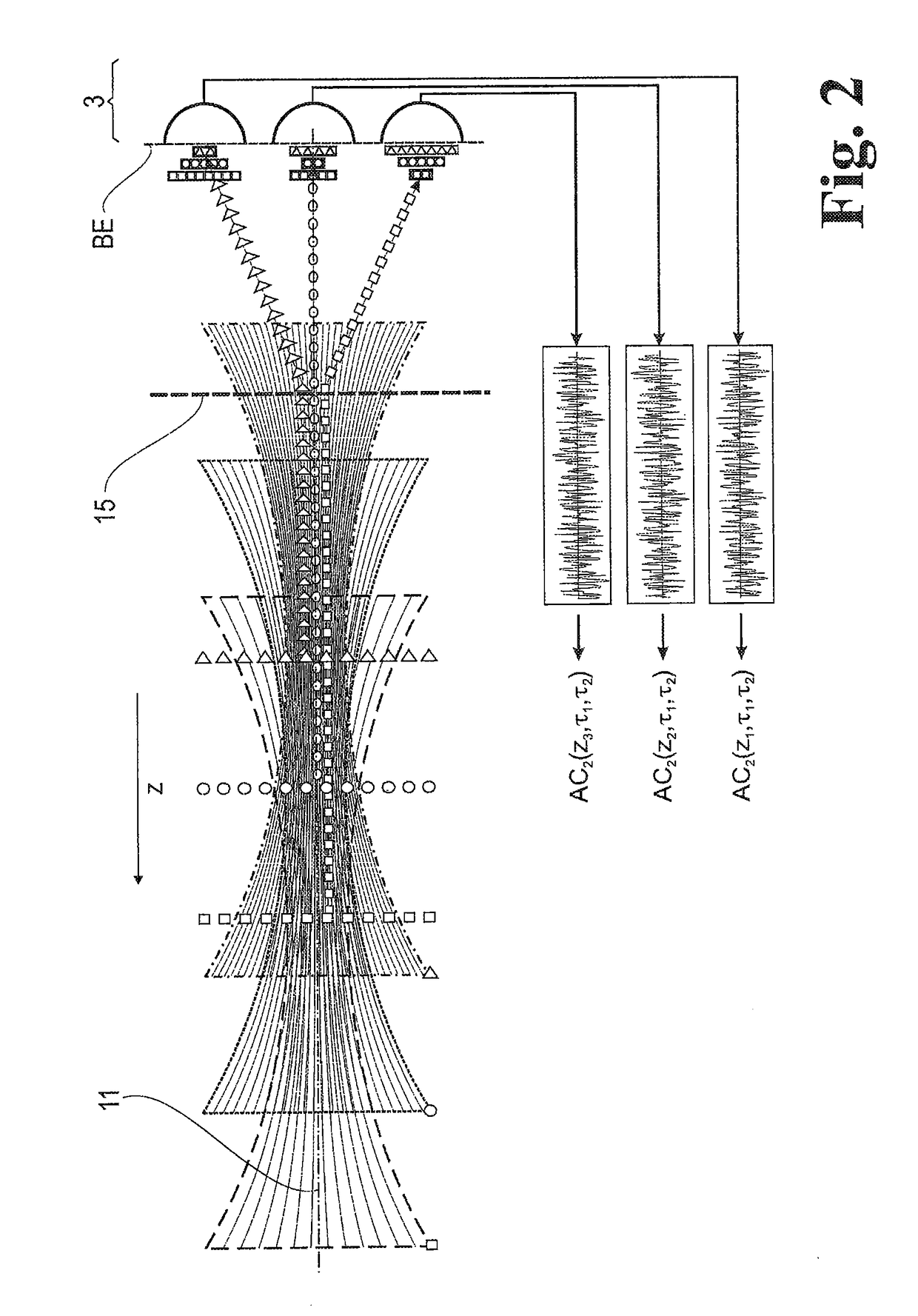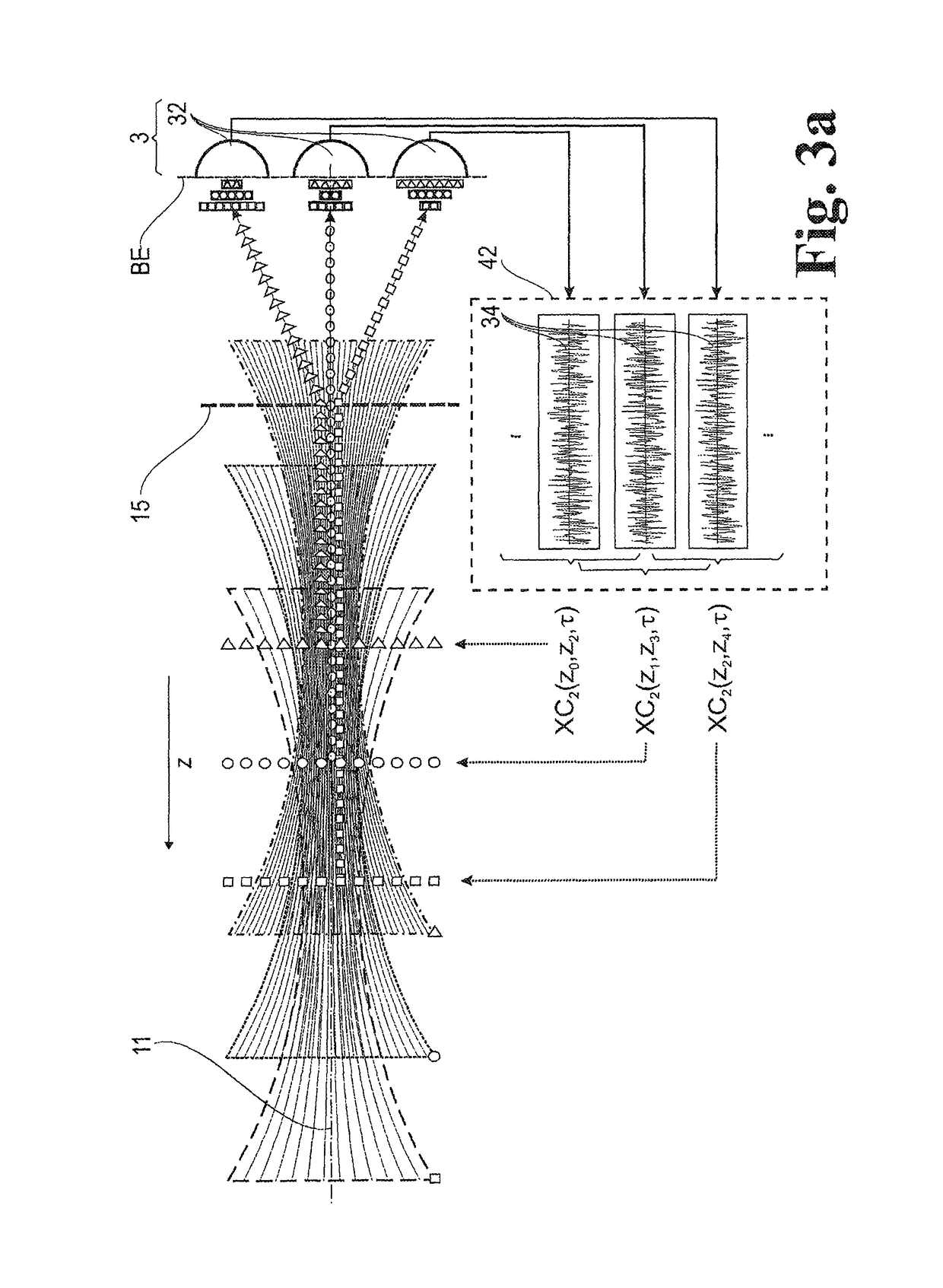Evaluation of signals of fluorescence scanning microscopy using a confocal laser scanning microscope
a fluorescence scanning microscopy and laser scanning microscope technology, applied in the field of evaluating signals of fluorescence scanning microscopy, can solve the problems of not changing the “waste” of out-of-focus photons, increasing the intensity of excitation light, and not being suitable for florescence measuremen
- Summary
- Abstract
- Description
- Claims
- Application Information
AI Technical Summary
Benefits of technology
Problems solved by technology
Method used
Image
Examples
Embodiment Construction
[0068]The basic flow of the method which can be perceived based on a confocal laser scanning microscope shown schematically in FIG. 1 and which has as subject matter the evaluation of signals of fluorescence scanning microscopy with simultaneous excitation and detection of fluorescence in different focal planes FE of a sample 5 includes the following steps.
[0069]At least one illumination beam 22 is coupled by means of a beam combiner 12 into a microscope observation beam path 1 which is defined by a measuring volume 51 of the sample 5 up to an image plane BE and which has, along an optical axis 11, a microscope objective 12, the beam combiner 13 and a detector unit 3 arranged in the image plane BE.
[0070]Next, the illumination beam 22 is focused with the microscope objective 12 in the measuring volume 51, wherein the illumination beam 22 passes through a beam-forming phase mask 23 in an illumination pupil for generating an elongated focus.
[0071]Fluorescent light generated in the meas...
PUM
| Property | Measurement | Unit |
|---|---|---|
| time | aaaaa | aaaaa |
| time | aaaaa | aaaaa |
| time | aaaaa | aaaaa |
Abstract
Description
Claims
Application Information
 Login to View More
Login to View More - R&D
- Intellectual Property
- Life Sciences
- Materials
- Tech Scout
- Unparalleled Data Quality
- Higher Quality Content
- 60% Fewer Hallucinations
Browse by: Latest US Patents, China's latest patents, Technical Efficacy Thesaurus, Application Domain, Technology Topic, Popular Technical Reports.
© 2025 PatSnap. All rights reserved.Legal|Privacy policy|Modern Slavery Act Transparency Statement|Sitemap|About US| Contact US: help@patsnap.com



